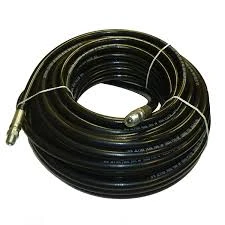f150 power steering hose
Understanding the Ford F-150 Power Steering Hose Function, Maintenance, and Replacement
The Ford F-150 is one of the most popular trucks on the market, known for its durability, versatility, and performance. Among the various components that contribute to the truck's exceptional handling and driving experience is the power steering system. Central to this system is the power steering hose, a crucial part that facilitates fluid movement, ultimately enabling smooth steering. In this article, we will delve into the function of the power steering hose, signs of wear, maintenance tips, and considerations for replacement.
Function of the Power Steering Hose
The power steering hose is responsible for transporting hydraulic fluid from the power steering pump to the steering gear and back. This fluid pressure assists the driver in steering the vehicle with minimal effort. When you turn the steering wheel, the hydraulic pressure generated by the power steering pump is delivered through the hose to the steering mechanism, allowing for easier maneuvering of the heavy truck.
There are typically two types of hoses in the power steering system the high-pressure hose and the return hose. The high-pressure hose carries fluid from the pump to the steering gear under high pressure, while the return hose carries the fluid back to the pump at lower pressure. Both hoses must be in good condition to ensure the system operates efficiently.
Signs of Wear and Damage
Like other components in the automobile, the power steering hose is prone to wear and damage over time. It is essential for F-150 owners to be aware of the symptoms indicating that the power steering hose may need inspection or replacement.
1. Fluid Leaks One of the first signs of a problem with the power steering hose is fluid leakage. If you notice a puddle of reddish or clear fluid under the front of your truck, it may indicate a leak in the power steering hose.
2. Steering Difficulty If the steering feels unusually stiff or requires more effort, it may be due to low fluid levels caused by a leak or a blockage in the hose.
3. Whining Noise A whining or groaning noise coming from the steering system can suggest that there is insufficient hydraulic fluid in the system, potentially due to a damaged hose.
4. Cracks or Deterioration Regular visual inspections can reveal cracks, bulges, or other signs of wear on the hose. If you see any physical damage, it is essential to address it before it leads to more severe problems.
f150 power steering hose

Maintenance Tips
To extend the lifespan of your Ford F-150's power steering hose, consider the following maintenance tips
- Regular Inspections Periodically check the power steering hoses for any signs of wear, leaks, or damage. Early detection can prevent more costly repairs down the road.
- Check Fluid Levels Regularly monitor the power steering fluid level and top it off as necessary using the recommended type of fluid for your specific F-150 model.
- Avoid Overheating Make sure your power steering system does not overheat, as excessive heat can degrade the hoses and other components. It’s essential to allow your truck to cool down after heavy-duty use.
Replacement Considerations
If you encounter significant issues with the power steering hose, replacement is often the best course of action. When replacing the hose, consider the following
- OEM vs. Aftermarket While aftermarket hoses can be more affordable, original equipment manufacturer (OEM) hoses are typically recommended for compatibility and reliability.
- Professional Help If you're not comfortable performing the replacement yourself, enlist the help of a professional mechanic to ensure the job is done correctly.
- Fluid Check After replacement, always check the power steering fluid levels, as the system will need to be bled to remove any air trapped in the hoses.
In conclusion, the power steering hose is a vital component of the Ford F-150's power steering system, playing a significant role in ensuring effortless steering. Regular maintenance and prompt attention to signs of wear can help keep your truck running smoothly and avoid more serious issues down the line. By understanding the function of this important part, F-150 owners can enjoy a safer and more enjoyable driving experience.
-
Ultimate Spiral Protection for Hoses & CablesNewsJun.26,2025
-
The Ultimate Quick-Connect Solutions for Every NeedNewsJun.26,2025
-
SAE J1401 Brake Hose: Reliable Choice for Safe BrakingNewsJun.26,2025
-
Reliable J2064 A/C Hoses for Real-World Cooling NeedsNewsJun.26,2025
-
Heavy-Duty Sewer Jetting Hoses Built to LastNewsJun.26,2025
-
Fix Power Steering Tube Leaks Fast – Durable & Affordable SolutionNewsJun.26,2025

